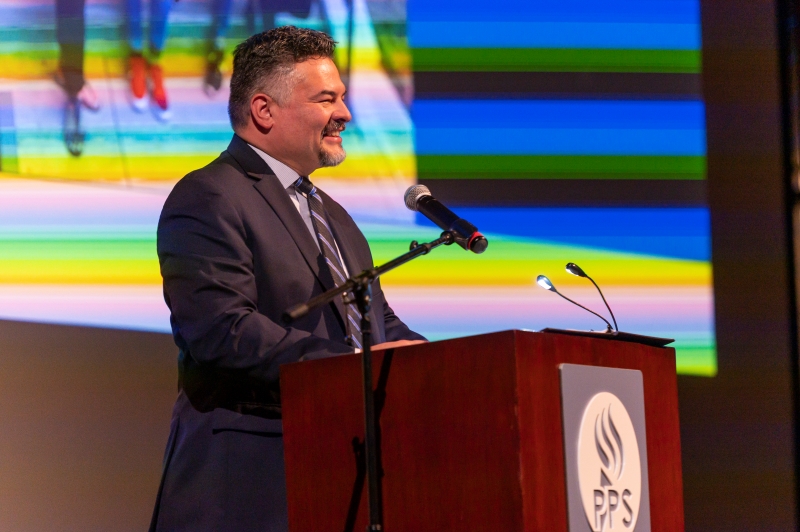-
From the Superintendent: The path to better student outcomes starts with curriculum
11/19/2018
Superintendent Guadalupe Guerrero speaks at the welcome night at Harriet Tubman Middle School. (Photo by Beth Conyers)

Superintendent Guadalupe Guerrero speaks at the welcome night at Harriet Tubman Middle School. (Photo by Beth Conyers)
CLOSEAs a new administration, we have been working, to develop a true, comprehensive curriculum for every school in the district at every level.
The goal is simple, yet transformational – you should be able to enter any school in our district, from the west hills to our eastern boundaries, and have opportunity and access to rigorous, well-defined and state-of-the-art learning.
This is very much a work in progress, but what we are doing is introducing the notion of a standards-based educational program at PPS. We’re calling it Guaranteed Viable Curriculum.
In order to improve outcomes and raise graduation rates for all of our students, we must have key educational ingredients: Curriculum that offers a clear path and opportunity for all students to be successful; professional learning opportunities for our educators; and assessment, so that we can monitor student learning and apply supports more strategically. All of this is part of a continuous improvement loop – and it is the bread and butter of high-functioning school systems.
With the participation and leadership of teachers we have begun development of standards-based units of study, along with sample lessons.
Here’s one example from sixth-grade science. Under the general category of “Life Science: Cells and Body Systems” we have a sample lesson titled “From molecules to organisms; structures and processes.” It calls on students to conduct an investigation, using rigorous techniques, to prove that living things are made up of cells.
Every sixth grader in every school should know not just the basics of the way biology works, but the rich details of how life forms, grows and becomes complex.
And here’s a sample from our first grade literacy curriculum: “Identify words and phrases in poems or stories that suggest feelings or appeal to the senses”
Again, every first grader should be able to start identifying the key elements of reading, not just comprehension but also for the sheer joy of it.
These are just a few examples of the way our ongoing work will continue to provide our educators with instructional guidance that will continue to become more refined over time. You can explore much, much more on our curriculum website.
Developing new curriculum is just one step, and it must be accompanied by professional development opportunities. To date, we have held nine one-day workshops in September and October for K-5 teachers; we have a workshop for ESL teachers coming up later this month; and we have scheduled workshops for kindergarten teachers in February and March.
Our curriculum work also has been the central focus of our monthly “Learning and Leading Together” professional development sessions with our school administrators.
This is the direction we are heading. Are we there yet? No, we are just getting started, but every department is working toward this goal. We understand that successful public school systems have well-articulated and coherent curriculum and instruction being implemented across a school district.
Folks paying attention to PPS will notice that we are talking a great deal more about teaching and learning, the importance of early literacy, what rigorous math instruction looks like, and how to make all content more accessible to diverse learners. These examples, among many other topics, such as arts education, science and socio-emotional learning, are central to our conversations.
This is the right path for our students, our district and our future. I’m glad we have started on this journey. It will take our continued conversations to ensure all of our students experience equitable outcomes.
Guadalupe Guerrero
Superintendent
By Month
- September 2024
- December 2022
- November 2022
- October 2022
- February 2022
- October 2021
- August 2021
- May 2021
- April 2021
- March 2021
- January 2021
- December 2020
- May 2020
- April 2020
- March 2020
- February 2020
- August 2019
- June 2019
- May 2019
- March 2019
- November 2018
- August 2018
- July 2018
- June 2018
- April 2018
- March 2018
- February 2018
- November 2017
- October 2017


